Nioh: Complete Edition Review
Nioh: Complete Edition
Review: How does the Complete Edition hold up?
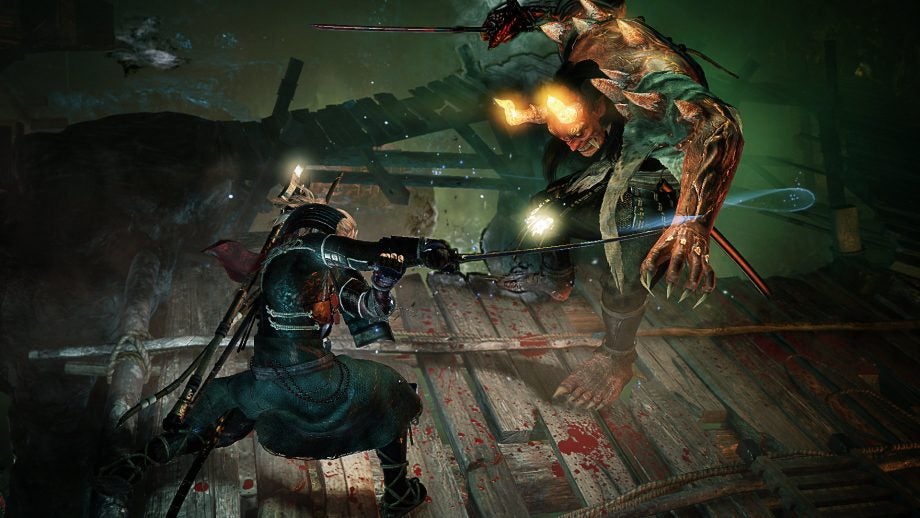
Verdict
Pros
- Hard-hitting action
- Sophisticated and engaging combat systems
- Punishing difficulty level
- Flexible character progression
Cons
- Bosses may be too brutal
- Not the strongest or most coherent story
Key Specifications
- Review Price: £39.99
Nioh Complete Edition Review by Jordan King
After years upon years in development, Nioh finally emerged on PS4 earlier this year to critical and commercial acclaim. It took the exploration and combat popularised by Dark Souls and enhanced it in some exciting ways.
The Feudal Japanese setting set the stage for some wonderfully grim encounters inspired by the country’s excellent folklore. Whether you were fighting vengeful Yokai or ghastly spiders, Nioh never failed to provide a frighteningly fair challenge. Now, the entire package has come to PC with the Complete Edition. So, how does it hold up?
Despite concerns ahead of its sudden launch announcement, I’m surprisingly impressed with Nioh’s PC port. It’s incredibly stable, capable of a consistent frame-rate and 4K resolutions if your gaming rig is up to the task. Unfortunately, there are a few issues to be addressed. Nioh has its own custom launcher with only a small number of customisation options, many of which failed to save until a patch was pushed after release.
Now, aside from some minor dips in performance on my system, it runs brilliantly. For context, my machine sports an AMD Ryzen 5, GTX 1060 6GB and 16GB of GDDR5 memory. Your experience with the PC version may differ depending on the specifications.
Related: Best PC Games
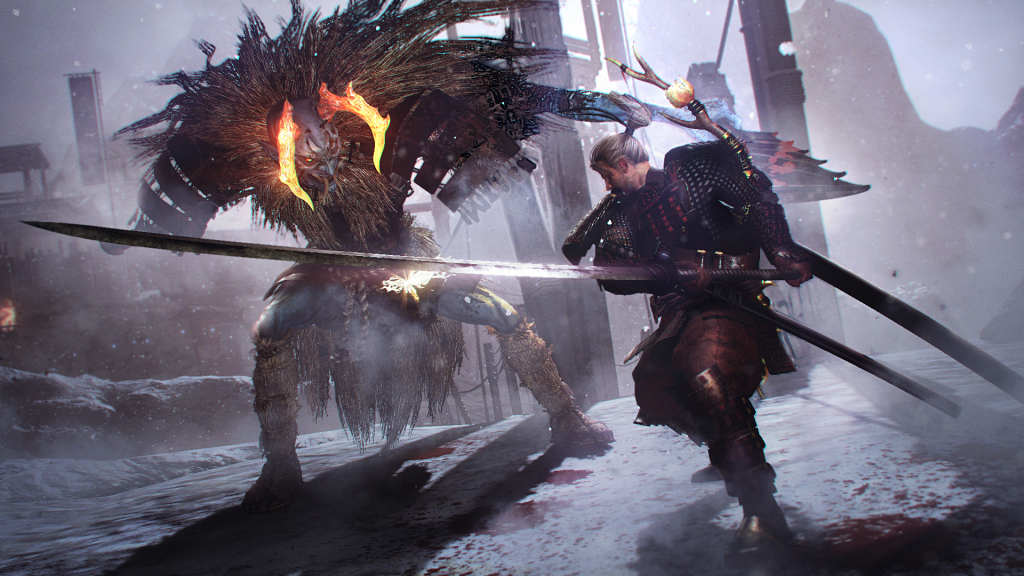
Nioh stars William, an Irish sailor who finds himself journeying to Japan in search of an ancient threat. Unfortunately, the land of the rising sun is filled with evil beasties wanting nothing but to kill him. Team Ninja has crafted a relatively engaging yarn with Nioh, although cutscenes are far too infrequent thanks to how long it can take to complete each stage. That aside, it’s beautifully presented and truly does the setting justice.
If you’ve yet to experience Nioh, this is the best way to do it. Team Ninja’s Complete Edition includes all previously released expansions and some exclusive content, including a truly ridiculous Valve-inspired helmet. There is so much to dig into here that I found myself losing dozens of hours simply reaching the first expansion. Nioh is hard, and isn’t afraid of demoralising the player as they try again and again to triumph against its challenges.
As I mentioned earlier, Nioh plays much like a mixture of Dark Souls and Bloodborne. However, it places a far more intense focus on player customisation. Each weapon type can be upgraded with its own individual skill tree. Some of these I never touched, opting instead to focus on a trio of blades that fit my play-style.
Nioh expects this, having you select two disciplines before even touching an enemy. I loved this flexibility. It ensured if one approach didn’t work, I could always try, and possibly succeed, with another. Additional loot can be obtained by returning to old stages, tackling side-quests or crafting them yourself.
Related: Hitman GOTY Edition Review
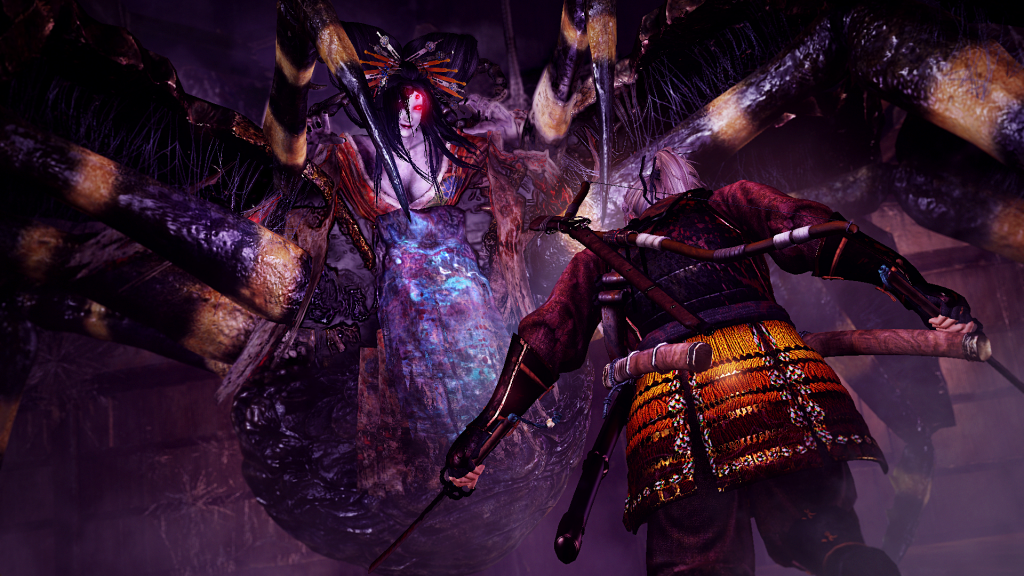
VERDICT
Nioh: Complete Edition is arguably the best way to experience Team Ninja’s fantastic action-adventure. Its tight combat requires fierce determination and its massive world can be daunting at first, but William is more than equipped to take on the horrors that await him.
If your PC is up to the task, Nioh is an essential purchase for those looking for a dark, challenging and utterly massive slasher.
Read on for our review of the original game on PS4!
It’s fair to describe Nioh as a Dark Souls clone, but that misses what’s most interesting about it. While the basic bones of style and structure are a straight lift from From Software’s series, Team Ninja has managed to wrap its own personality around them.
The result is a game that feels a little like Ninja Gaiden does Dark Souls, but goes beyond that into something more. Along the way it acts as a convincing comeback; it is unquestionably Team Ninja’s best work of phe last ten years.
It isn’t difficult to spot what Nioh takes from Dark Souls. Forget the high-speed action and fluid bloodletting of the Ninja Gaidens; this is a more measured, slow-paced game of cautious exploration and brutally challenging combat.
Killing enemies earns you “amrita” (Nioh’s equivalent of souls), which can be used to level up and upgrade stats at the nearest shrine: Nioh’s bonfire. Die and you reappear at the nearest shrine, still holding all your equipment but losing all your precious amrita. Want it back? Well, you’ll need to find and touch your glowing grave.
If you’ve played Dark Souls, the general feel and pacing will be familiar. You begin each level exploring tentatively, learning the enemy positions, working out who to attack and who to avoid, all the while trying to stock up on amrita and equipment to help you even the considerable odds ranged against you.
You’ll poke and test your foes, bite off more than you can chew and die, or you’ll lose your patience and make clumsy mistakes, resulting in another painful demise.
Related: PS4 Pro vs PS4
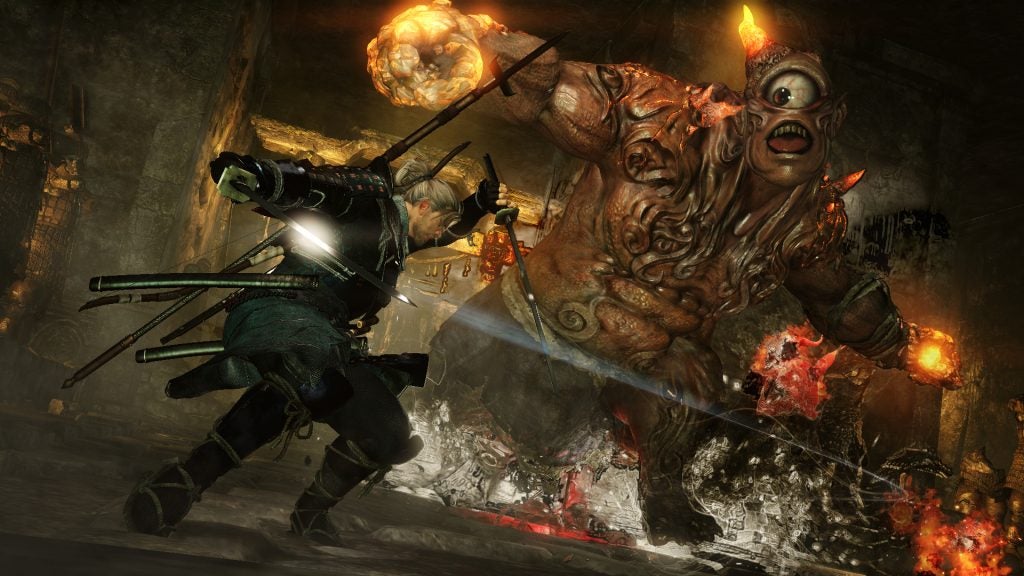
Continue to battle on and you’ll find another shrine, giving you a new entry-point to explore further. You’ll tackle tougher enemies and even the odd sub-boss, and finally work your way to your objective. This inevitably results in a fiendishly tricky boss battle, where you’ll need to buff yourself, watch carefully for tells and weaknesses, then slowly and patiently develop an effective strategy. In short, it’s a lot like Dark Souls.
There are crucial differences, however. In fact, the more you look into the detail, the more Nioh and Dark Souls diverge.
For one thing, Nioh takes a more Diablo-influenced style to loot drops, throwing out new arms and armour at a frankly ludicrous rate. Much of it will be no good whatsoever, but that’s OK; just offer it at the nearest shrine in return for amrita and bonus goodies. For another, Nioh gives you a wider set of tools to work with, ranging from ninja abilities and equipment to magic talismans, various grenades and throwing weapons and a whole selection of buffs.
It isn’t that Dark Souls doesn’t give you any goodies, but it encourages you to use them sparingly – perhaps only when they really count. With health potions and many items respawning every time you pray at the shrine or die, Nioh feels a little less restrictive.
Related: Dark Souls 4
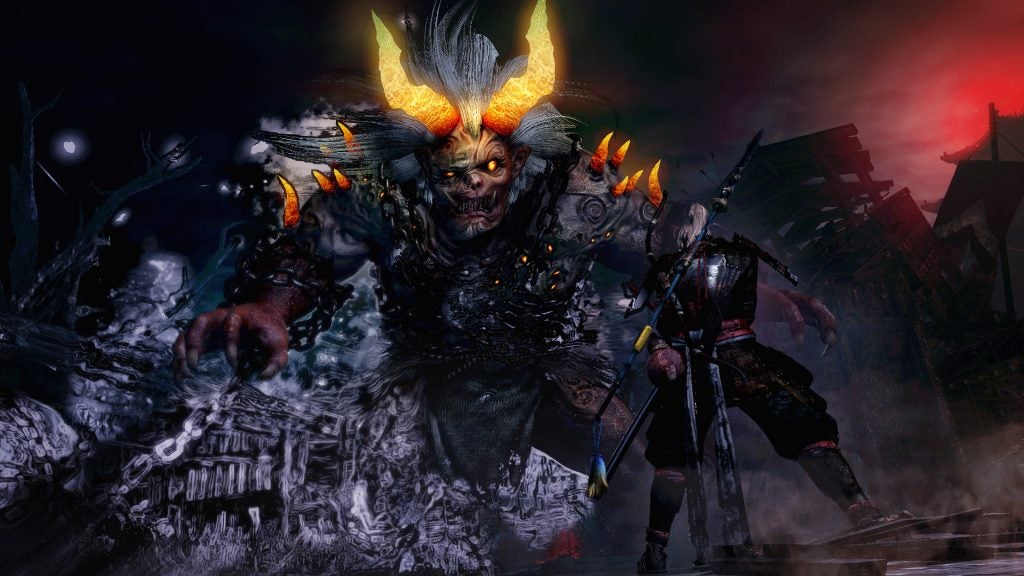
Where you can really see Team Ninja’s DNA at work, though, is in Nioh’s cleverly layered and interlinked combat systems.
Flexibility is the key, with an instant choice of four weapons (two melee, two ranged) at any time, and three stances (high, medium and low) with each of your close-combat arms.
Each stance has its own set of moves, with high stance prioritising aggressive moves, low stance defensive moves and medium stance going for a balance between the two. You can flick from one to another in an instant – or switch from, say, a katana to an axe. That comes in handy when some weapon/stance combos are perfect for mopping up more than one enemy (itself rarely a good idea), while others are a necessity for dealing with Nioh’s bigger threats.
Your choice of weapon, stance and armour will also have an effect on your consumption of Ki. Ki is Nioh’s equivalent of Dark Souls’ stamina. Attacks, blocks and evasions will work through it, and when the gauge runs dry, you’re left pretty much defenceless.
High-stance attacks tend to use more Ki than medium attacks, and the same goes for heavier but more damaging weapons such as hammers and axes. Combine high and heavy and you’ll do a lot of damage, but you’d damn well better be sure you connect. Heavy armour, meanwhile, will offer more protection, but also see you haemorrhaging Ki every time you strike or block.
Managing this is partly a question of play style and balance, but also of using your Ki Pulse. Hack away at an enemy and, as your Ki dissipates, a cloud of white energy will coalesce around you. Press the R1 button just as it comes together and you’ll Ki will recharge at lighting-speed. You’ll take ages to get on top of this, but you need to. Without the Ki Pulse in later stages, you’re dead meat.
Related: Bloodborne 2 wishlist
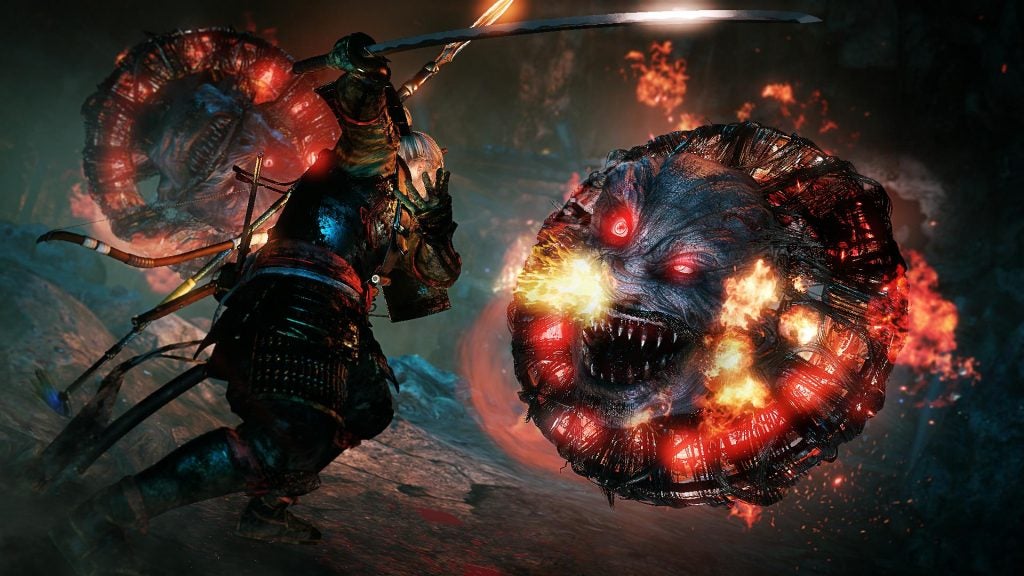
And before you think that’s it, Nioh throws in another twist. Throughout most of the game you’ll have a guardian spirit, pledged to protect you as you battle. While you’re killing, your spirit is charging, and when fully charged can be unleashed upon your foes.
The effects will differ from spirit to spirit – some slowing enemies and offering defensive perks, others giving you lighter protection but whacking up the damage. Filling the gauge and knowing when to trigger your spirit is a key part of the action, and the fact that it’s bound to your grave when you die makes it all the more gutting when you go down – and all the more imperative that you reach your grave and retain control.
All this can take some getting used to, but embrace Nioh’s systems and you’ll feel that old Team Ninja magic once again. You’ll learn, as you do in Dark Souls, how to exploit enemy weaknesses, dodge, block and strike, but you’ll also learn how to chain attacks together, then retreat – much as in the old Ninja Gaiden games.
In fact, levelling certain stats will earn you Samurai Skill points, to be spent on new combos and moves to use, even while blocking. Combine this with a slightly faster feel than Dark Souls, and Nioh seems to hit an ideal point between the two.
The foes you’ll be fighting come in two basic types. On the one hand you have human enemies, some easy-pickings, some well-armed and armoured and possessed of formidable skills. Both types respawn every time you die or pray at a shrine.
On the other hand you have Yokai, a bad bunch of demons, ogres, cyclopean thugs, skittering ghouls, creepy bird-women and assorted fiends. Some you can see hiding or digging for something, while others appear only as weird, distorted clouds of unworldly evil, appearing only when you draw near.
Related: Best PS4 Games
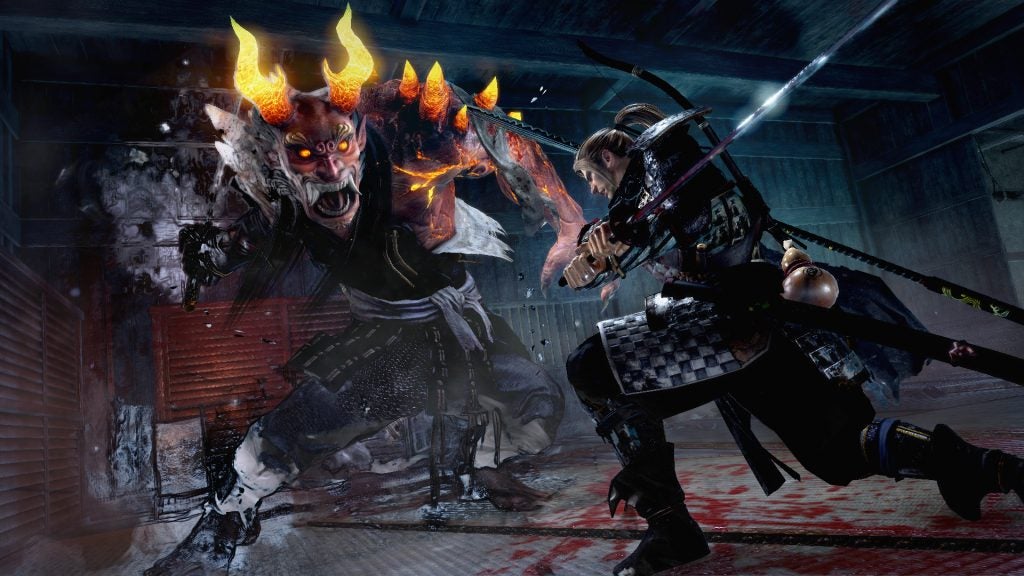
Some Yokai act as mini-bosses, blocking off areas of the game until destroyed. Once dispatched, they disappear permanently. Others are a more persistent nuisance, respawning whenever you do. That’s bad news when you have to get past them, but good news when you need to grind for amrita, grab some gear and level up.
At first, the larger Yokai will be terrifying. They’re fast and have brutal, sometimes unblockable, attacks. With time, though, you’ll learn to dance around them, closing in for some killer blows then moving out of range of their attacks. Some have weaknesses you can exploit from range, while others have a nasty habit of pairing up with monstrous chums. Learning how to take them down is one of the best and most exciting elements of the game.
One of the others is tackling Nioh’s revenants; restless warrior spirits you can summon and defeat, earning amrita and often some tasty kit. Although you get a warning of their level before you summon them, they can be deceptively hard to put down, which makes it all the more satisfying when you do.
This is even more the case when you play in online mode, where the spirits of other players can be summoned and battled for amrita and new gear. It’s a nice, asynchronous take on multiplayer, which otherwise extends to the ability to summon other players for assistance. Unfortunately, pre-release, all my summoning attempts fell on deaf ears.
Related: PS4 Pro vs Xbox One X
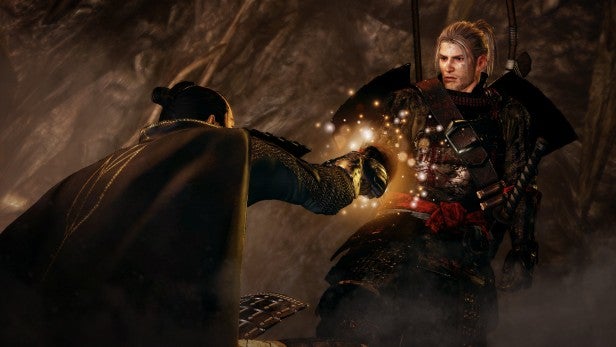
Nioh has its own distinctive feel, then, but the differences between it and Dark Souls don’t stop there. Where the world of Dark Souls feels like one contiguous space, albeit with zones linked to a central nexus, Nioh starts off as a linear, level-by-level adventure before spreading out to a world map with individual missions.
You even get opportunities to repeat areas with different objectives, enemy positions and difficulty levels, which can be useful if you want to grind up a bit before continuing.
Nioh can be a beautiful-looking game. The opening stages in a dank Tower of London and a misty Japanese coastal village don’t really show the game at its best. However, as you creep through snow-covered ruins or into dank caverns, the levels grow in personality and strength.
At its best, the Japanese folklore influenced level and monster design takes us back to the glory days of Capcom’s Onimusha. In fact, Nioh feels like the closest thing to a next-gen update of that much-loved, much-lamented saga.
Cleverly, PS4 gamers can choose between more polished anti-aliased visuals and a smoother 60fps frame rate, while PS4 Pro owners get a choice between 4K at 30fps, 4K with a variable frame rate, and 1080p at 60fps. For the sake of gameplay, we’d recommend the latter.
Although 4K 30fps looks amazing and is always playable, the unlocked mode seems to suffer some weird stutters, and even the 4K 30fps mode shows some weird effects where enemies move jerkily in the background in some scenes. Trust me, you’ll want every millisecond of reaction time, and that’s where 1080p/60 delivers.
Related: Upcoming PS4 Games
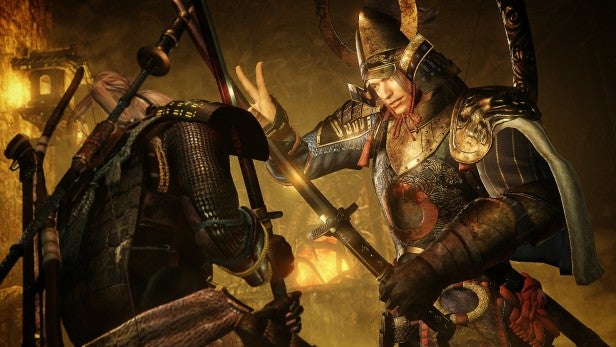
So, Nioh is a fantastic effort, but one that falls short of Dark Souls’ greatness in two areas.
The Dark Souls games and Bloodborne score high for their effective, almost ambient storytelling and superb world design; you feel like your journeying to strange, sometimes terrible new land. You might not feel like an all-conquering hero, but in your own way your writing your own story.
Nioh’s storytelling, with its more conventional exposition and cut-scenes, feels both more generic and less accomplished. Your missions struggle to connect in a convincing plot; your hero – William – isn’t that interesting, and Dark Souls’ sense of scale and wonder isn’t quite there.
And the second? Well, let’s talk boss battles. Fiendish, unforgiving bosses are a key part of Dark Souls’ appeal and an equally key part of Nioh’s, but while those bosses look formidable, they’re not actually much fun to fight.
In theory, it’s all a question of learning their habits and watching for their pre-attack tells, then finding the right moment to strike, then retreat. In practice, though, they’re a little too unforgiving, punishing every mistake with a rain of blows that will lose you the majority of your health bar in a fraction of a second – and sometimes, throwing in combos that will see you staring helplessly as near-victory becomes defeat in one fatal barrage. Health potion? You won’t have time to take a sip.
You might congratulate yourself on beating the first proper boss – a hulking, ball-throwing bruiser that you’ll have to fight in a cramped ship’s cabin, where the camera angles are constantly working to undermine you. Then, you’ll meet the second: a nasty parasol-wielding succubus with a series of vicious chain attacks.
Prepare to die? Prepare to cry, more like. You may be weeping tears of real frustration. Guess what? The bosses will only get worse from here on in.
For me, these battles were less the high points of the game than obstacles I had to overcome to get to the bits I enjoyed. On occasion, I actually gave up, wandering off to grind the Yokai and wail on revenants, then returning for another few goes.
Of course, more serious Dark Souls fans may not find themselves so challenged, although I suspect that Dark Souls plays fairer when it comes to blocking, evasion and splash damage.
Still, I kept coming back, and so will you, because the action is so addictive, the kill and loot cycle so gripping, and because you just need to see where the game will take you next.
Verdict
Nioh can’t match the gothic grandeur of Dark Souls, and the boss battles may give you nightmares for all the wrong reasons. All the same, by merging aspects of From Software’s classics with elements of its own ninja hits, Team Ninja has crafted its finest game in years.
Nioh is every bit as compulsive and challenging as its inspiration, but is smart enough to add some interesting new twists. Love Dark Souls? Love samurai, ninjas and weird oriental fantasy? Jump onboard and prepare to die, cry and experience all the magic in-between.

